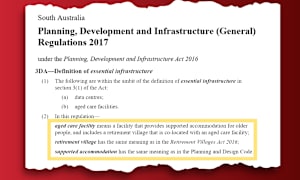The residential care and home care sectors are both facing more upheaval over the next 12 months as the Government continues to roll out its reform agenda – will all providers be able to keep up the pace?
Here is what lies ahead in 2024.
February
Operators will be subjected to increased scrutiny of their spending by consumers and their families when the Department of Health and Aged Care begins publishing new information about residential and home care providers’ finances and operations on My Aged Care.
This publication will include service-level information on how much money is spent on care, food, accommodation, cleaning and administration, as well as income and whether providers recorded a profit or loss.
Provider-level information will also be published on wages paid to Registered Nurses, Enrolled Nurses and personal care workers – which could drive higher turnover rates among the workforce.
June
The end of June will mark the long-awaited end of the Aged Care Approvals Rounds (ACAR) which saw bed licenses assigned to residential care providers. With places from then assigned to the consumer, operators will theoretically be freed up to build where they want.
But with just over 1,500 new beds built in the last financial year and providers pausing the development of new beds, this measure will hang on the outcome of the Government’s response to the Aged Care Taskforce’s recommendations and whether they can provide new capital to the sector.
July
1 July will be a big day for aged care providers. With the red tape facing providers one of the primary causes of staff complaints, all eyes will be on the new regulatory model which is due to commence. Will it deliver on Aged Care Minister Anika Wells’ promise of a “more thoughtful” regulatory design?
At the same time, providers will also have to meet the newly strengthened Quality Standards, which are being revamped in areas such as food and nutrition, dementia, diversity, governance and clinical care to meet recommendations from the Aged Care Royal Commission.
After a couple of false starts, national worker screening for aged care is also scheduled to begin. The Government committed to a scheme recording care workers’ ongoing training, English proficiency requirements and criminal history screening – will this tougher system be a benefit or a hindrance?
July will also mark the beginning of the new Single Assessment System for aged care. With the Department announcing that the tender for the new system will be up for grabs in January, this measure should ideally streamline the process for aged care consumers.
But perhaps most critically, this month is also the deadline for the new rights-based Aged Care Act, which will underpin the system into the future. Providers should have an answer soon to the “crickets” around the new Act with the draft Bill for the Act due to be released for public consultation by the end of this year.
October
October will be another crunch period for the residential care sector with the mandatory direct care minutes for residents to be raised to 215 minutes per resident per day including 44 minutes with a Registered Nurse.
Given the requirement for 200 direct care minutes introduced on 1 October 2023 has already hit providers financially, this new requirement is likely to put further pressure on operators in terms of agency staff usage and wages, particularly smaller operators.
The UTS Ageing Research Collaborative (UARC)’s fourth edition of its independent Australia’s Aged Care Sector Report released earlier this week confirms that operators with

two to six homes, followed by stand-alone homes, were the worst financial performers.
But there is good news.
As revealed by Minister Wells a fortnight ago, the Government will announce the new AN-ACC price in August 2024 – with the new price to start from 1 October.
With advice from the Independent Health and Aged Care Pricing Authority (IHACPA), the new price should reflect the true cost of care – and help providers to meet these new demands.
There is also May’s Federal Budget – with the Aged Care Taskforce’s Final Report due to be released publicly any day now, any recommendations that the Government chooses to take up should be factored into the Budget papers – and could provide further relief for operators.










